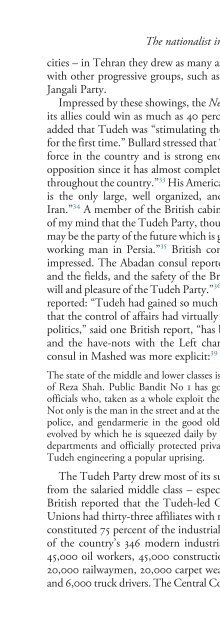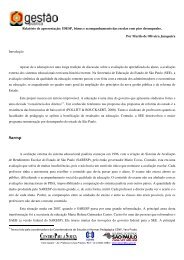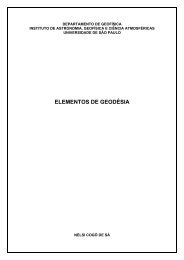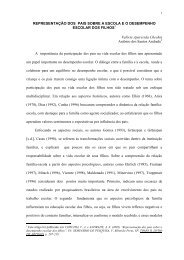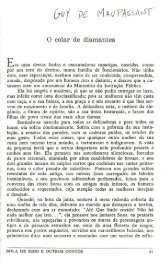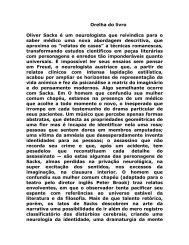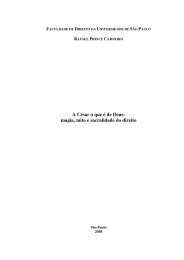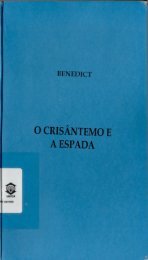A HISTORY OF MODERN IRAN - Stoa
A HISTORY OF MODERN IRAN - Stoa
A HISTORY OF MODERN IRAN - Stoa
Create successful ePaper yourself
Turn your PDF publications into a flip-book with our unique Google optimized e-Paper software.
The nationalist interregnum 109<br />
cities – in Tehran they drew as many as 40–60,000. It also forged alliances<br />
with other progressive groups, such as the Iran Party, Socialist Party, and<br />
Jangali Party.<br />
Impressed by these showings, the New York Times wrote that Tudeh and<br />
its allies could win as much as 40 percent of the vote in fair elections. 32 It<br />
added that Tudeh was “stimulating the masses to think and act politically<br />
for the first time.” Bullard stressed that “Tudeh is the only coherent political<br />
force in the country and is strong enough to nip in the bud any serious<br />
opposition since it has almost complete control of the press and of labour<br />
throughout the country.” 33 His American counterpart reported that “Tudeh<br />
is the only large, well organized, and functioning political machine in<br />
Iran.” 34 A member of the British cabinet commented: “I cannot get it out<br />
of my mind that the Tudeh Party, though admittedly a revolutionary party,<br />
may be the party of the future which is going to look after the interests of the<br />
working man in Persia.” 35 British consuls in the provinces were equally<br />
impressed. The Abadan consul reported that “the security of the refinery<br />
and the fields, and the safety of the British personnel depend on the good<br />
will and pleasure of the Tudeh Party.” 36 British officials touring the Caspian<br />
reported: “Tudeh had gained so much influence in Gilan and Mazanderan<br />
that the control of affairs had virtually passed into their hands.” 37 “Persian<br />
politics,” said one British report, “has become a struggle between the have<br />
and the have-nots with the Left championing the latter.” 38 The British<br />
consul in Mashed was more explicit: 39<br />
The state of the middle and lower classes is little better than in the dark latter days<br />
of Reza Shah. Public Bandit No 1 has gone, only to make way for a coterie of<br />
officials who, taken as a whole exploit the masses nearly as thoroughly as he did.<br />
Not only is the man in the street and at the plough looted directly by local officials,<br />
police, and gendarmerie in the good old ways, but a new technique has been<br />
evolved by which he is squeezed daily by big business in the shape of monopoly<br />
departments and officially protected private racketeers . . . Their only fear is the<br />
Tudeh engineering a popular uprising.<br />
The Tudeh Party drew most of its support from urban wage earners and<br />
from the salaried middle class – especially the intelligentsia. By 1945, the<br />
British reported that the Tudeh-led Central Council of Federated Trade<br />
Unions had thirty-three affiliates with more than 275,000 members. 40 This<br />
constituted 75 percent of the industrial labor force with a presence in most<br />
of the country’s 346 modern industrial plants. Its membership included<br />
45,000 oil workers, 45,000 construction laborers, 40,000 textile workers,<br />
20,000 railwaymen, 20,000 carpet weavers, 11,000 dockers, 8,000 miners,<br />
and 6,000 truck drivers. The Central Council showed its full strength in May


